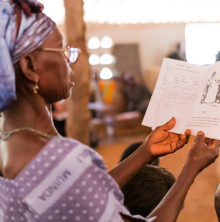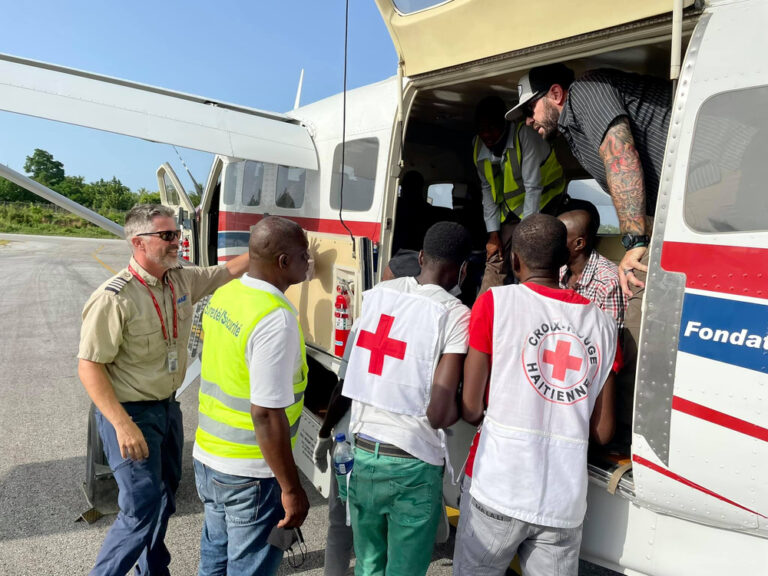When WWII pilots envisioned using small aircraft to help the gospel spread to hard-to-reach areas, could they have imagined what missionary aviation looks like today? Could MAF’s founders have conceived of the complexity of the tools—the aircraft—that now make up the MAF fleet?
Now, more than 75 years after the start of MAF’s ministry, its aircraft have changed dramatically. But one thing that has not changed is MAF’s mission*—to share the love of Jesus Christ so that isolated people will be physically and spiritually transformed.
The Beginnings (1945 – 1965)
Fabric-covered airplanes like the Piper Cruiser, Piper Pacer, and the Stinson Voyager helped start the earliest programs, in Mexico and Central and South America. These light aircraft served remote jungle outposts where western missionary families were bringing the gospel to remote tribes. MAF pilot Nate Saint was passionate about reaching one tribe in particular—one that was feared as a “tribe of killers.” In 1948, he wrote to his parents that he expected the airplane would play a part in reaching them with the gospel.

His prediction proved true. In January 1956, Saint landed a bright yellow Piper Family Cruiser on a sandbar nicknamed Palm Beach, along the Curaray River. Initially, he and four other missionaries had friendly interactions with members of the feared Waorani. But then, days later, the world learned of the five men’s martyrdom at the hands of the tribe.
Far from slowing down the dream of those early WWII pilots, this incident catapulted the idea of missionary aviation across the globe. As a result, young Christians caught the vision of using airplanes to reach the lost—and MAF grew rapidly.
The Growing Years (1965 – 1990)
As MAF moved from fabric-covered to aluminum aircraft, small Cessna aircraft became the workhorses of the day.
In Indonesia, Cessna 185s and 206s served western missionaries and local evangelists in hard-to-reach areas, and the gospel continued to spread. These new birds nearly doubled the range and load of those earlier aircraft and opened more doors for physical healing, education, community development, and disaster relief to reach isolated people.

A second-generation MAF pilot, Dick Parrott, son of MAF founder/former president Grady Parrott, recalls opening the West Kalimantan, Indonesia, program in 1969 with a brand new C185, PK-MCB, that came to be known as “Charlie Brown.” As the sole pilot/mechanic on the program at the time, Dick was responsible for fixing and flying the airplane.
Of course, other pilots and airplanes followed, and the program expanded to East Kalimantan (now North Kalimantan) and, later, Central Kalimantan. Those small Cessnas brought physical healing to isolated people through a partnership with a Baptist mission hospital, and they enabled the training of 100,000 Dyak Christians through a theological education program. MAF also served a C&MA Bible school there.
A few years ago, when Dick learned that Charlie Brown was going to be removed from service, he was surprised.
“I was amazed that it was still in operation,” said Dick. “You know, MAF does a great job keeping their equipment operational.”
Over in Papua, Indonesia, MAF was continuing to serve western missionaries who were working on Bible translations. Along with the small Cessna airplanes, MAF introduced another aircraft to its fleet in 1976, the helicopter. This new tool helped missionaries survey still-unreached areas and allowed them to live remotely until an airstrip could be built.
Recent Years (1990s – 2020)
In more recent years, MAF introduced larger, more complex turbine-engine aircraft to its fleet—Cessna Caravans, Quest Kodiaks, and a PC-12. These brought another big jump in range and load capabilities, plus advanced technology that increased safety and efficiency. And, they use jet fuel, verses aviation gasoline (Avgas), which is more readily available overseas.
In March 2016, an MAF Caravan landed at the Todro airstrip in the Democratic Republic of the Congo. It carried MAF staff, SIL missionaries and local dignitaries who had come to celebrate the completion of the Logoti-language New Testament—a project that moved forward with MAF’s help through years of war and insecurity.
MAF’s service spans multiple decades when it comes to bringing the gospel to a remote people group, serving missionaries working on a translation, delivering completed Bibles, and supporting local churches.

These decades of service typically represent multiple aircraft as well—the right aircraft for the job.
But no matter the airplane make, model, or size, each one serves a kingdom purpose—to reach isolated people with the love of Jesus Christ. And each one is meticulously maintained thanks to the support of people like you who have stood with us through the years; people who still believe that the airplane can play a part in introducing people to the gospel.
*When this story was written, we were still using our old vision and mission statements. In 2021 we rephrased them slightly, though the intent is the same. You can see them here.


